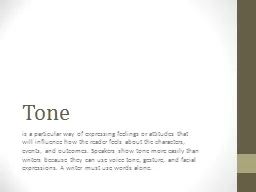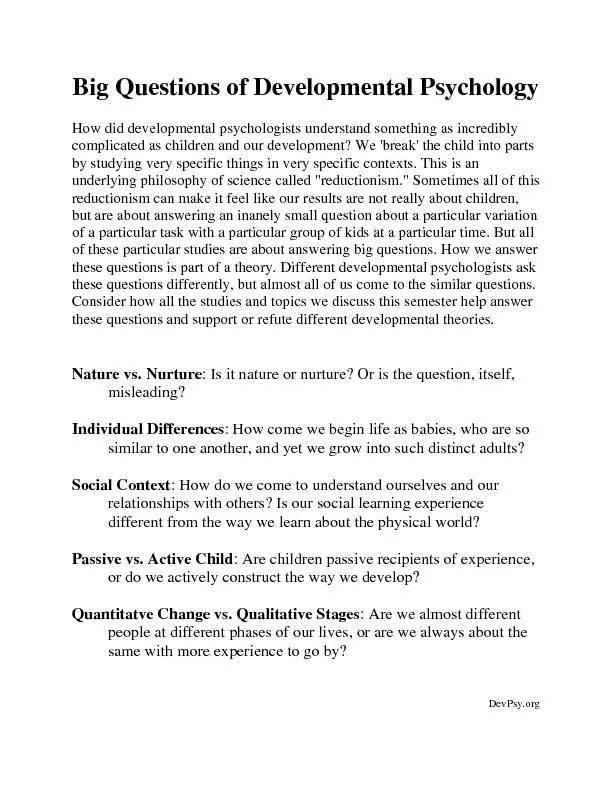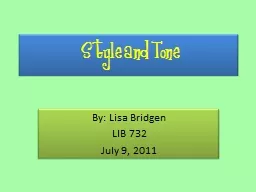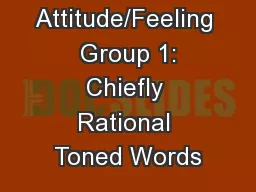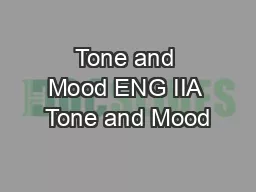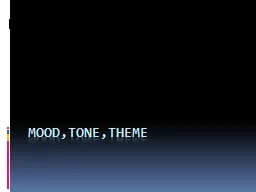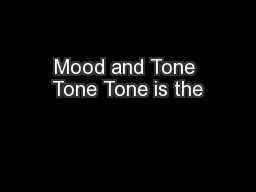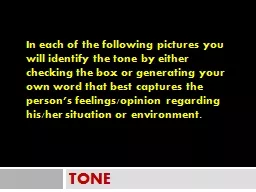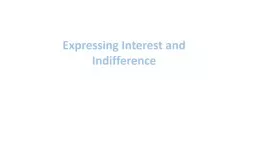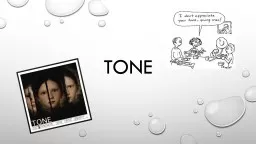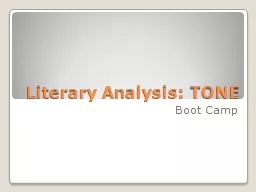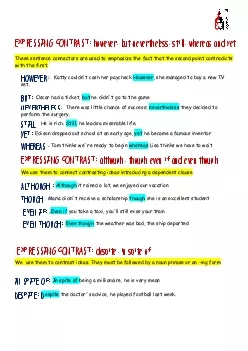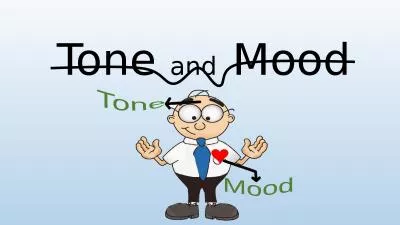PPT-Tone is a particular way of expressing feelings or attitudes that will influence how
Author : messide | Published Date : 2020-07-03
Watch https wwwyoutubecomwatchvC3TZGZn5VwA What is tone How can you identify it TONE is simply the authors attitude toward the subject You can recognise the
Presentation Embed Code
Download Presentation
Download Presentation The PPT/PDF document "Tone is a particular way of expressing ..." is the property of its rightful owner. Permission is granted to download and print the materials on this website for personal, non-commercial use only, and to display it on your personal computer provided you do not modify the materials and that you retain all copyright notices contained in the materials. By downloading content from our website, you accept the terms of this agreement.
Tone is a particular way of expressing feelings or attitudes that will influence how: Transcript
Download Rules Of Document
"Tone is a particular way of expressing feelings or attitudes that will influence how"The content belongs to its owner. You may download and print it for personal use, without modification, and keep all copyright notices. By downloading, you agree to these terms.
Related Documents

